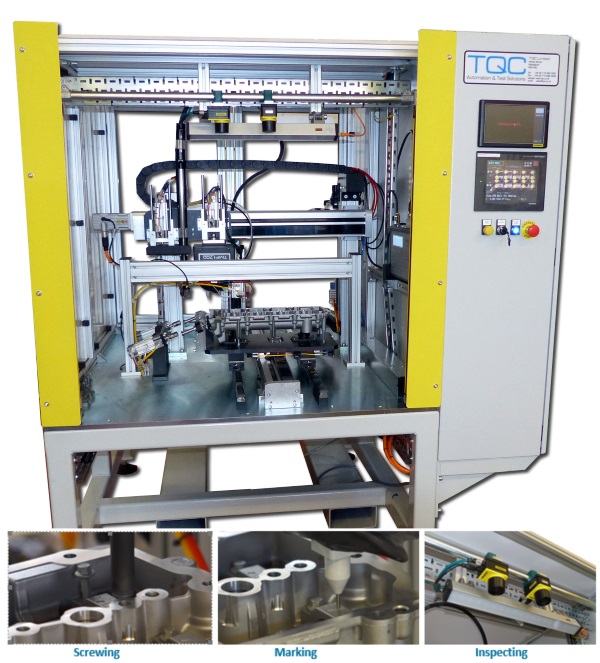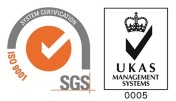Assembly Automation Case Studies: Casting Multi-Position Screwdriving & Marking System
Explore the Assembly Automation Section
Automatic assembly machines and automation system solutions provide the best method for reducing labour costs, increasing output and eliminating manual handling concerns.
Explore this section to find out more about the how TQC can help you with your factory assembly automation processes
- Assembly Automation
- Pallet Transfer Systems
- Rotary Systems
- Assembly Benches
- Robotics and Handling
- Checking Jigs & Assembly Fixtures
- Case Studies
- Casting Multi-Position Screwdriving & Marking System
- Co-operating Robots
- Pallet Assembly System for Automotive Glovebox Latch
- Pallet Assembly System for Metal Pressed Parts
- Laser Marking & Verification System
- Lead Pot Robotic Handling System
- Automotive Plug Feed & Check System
- Poka Yoke Assembly Bench for Automotive Latch
- Bearing Automatic Heat, Press & Assembly System
- Hot Insert, Cold Insert & Seal Assembly/Check System
- Robotic Handling & Leak Test Cell
- Robotic Weld & Fabrication System
- SCARA Robot cell for Automatic Assembly of a Small Electrical Handset
- Semi-Automatic Assembly System for Automotive Radiators
- Cylinder Head Cover Clean, Assemble and Test Suite
- Automotive Hinge Assembly & Test System
Client: Leading Automotive Casting Company
Part: Cam Carrier Assembly
Machine supplied: Automatic assembly / disassembly machine for cam carrier castings
Overview: This system was designed and manufactured in order to give the customer the ability to rectify assembled parts and also perform low volume production.
Download details of this system as a PDF

The assembly is a single casting which has 20 screws that secure 9 cam caps in place. The screws are a self-tapping style known as ‘Taptight’. Further assembly operations are to insert 2 hollow dowel pins into the casting. After a successful assembly process, fitted parts are marked with identification to ensure that when these parts are removed they can be refitted in the correct configuration.
The machine is constructed from a fabricated mild steel base frame with a steel bedplate. The upper guarding is constructed from aluminium extrusion and polycarbonate panels
Key features:
- Two off 2-axis servo drive systems
- Electronic screwdriver
- Dot peen marker
- Pin insertion mechanisms
- Two off vision systems with associated light sources
Sequence of Operation:
Low volume production cycle
- Manual load of main casting and cam caps on machine platen at the front of the machine.
- Vision check all parts are present and correct
- Machine platen indexes to pin insertion station.
- Pins inserted.
- Machine platen indexes to main assembly position.
- Screws automatically inserted in multiple places with position in 2 axes via the machine platen in one axis, the screwdriver in the other.
- Dot Peen marking in multiple positions again using the 2 servo positioning systems
- Machine platen returns to front position for final vision inspection of the assembly and reading of the percussion identification marks
- Manual unload of the finished assembly
Tear Down or Stripdown mode
This sequence varies depending of the requirements of each particular assembly. The system has the capabilities of removing any screws and refitting, then completing the identification marking and final vision inspection.
There is an automatic rework mode for part assembly parts and also an automatic tear down mode that removes all 20 screws from an assembly.
- Contact us online
- Email us or call us on 0115 950 3561
